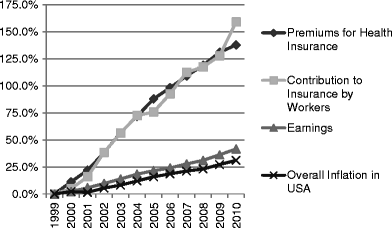The economic pressures for biosimilar drug use in cancer medicine
- PMID: 22249658
- PMCID: PMC3291824
- DOI: 10.1007/s11523-011-0196-3
The economic pressures for biosimilar drug use in cancer medicine
Abstract
The main rationale for using biosimilar drugs is for cost saving. The market development for biosimilar drugs will therefore depend on the degree to which cost saving measures are required by nations, medical insurers and individuals and the absolute savings that could be gained by switching from original drugs. This paper is designed to discover the degree to which financial constraints will drive future health spending and to discover if legal or safety issues could impact on any trend. A structured literature search was performed for papers and documents to 27 August 2011. Where multiple sources of data were available on a topic, data from papers and reports by multinational or national bodies were used in preference to data from regions or individual hospitals. Almost all health systems face current significant cost pressures. The twin driver of increasing cancer prevalence as populations age and cancer medicine costs rising faster than inflation places oncology as the most significant single cost problem. For some countries, this is predicted to make medicine unaffordable within a decade. Most developed countries have planned to embrace biosimilar use as a cost-control measure. Biosimilar introduction into the EU has already forced prices down, both the price of biosimilar drugs and competitive price reductions in originator drugs. Compound annual growth rates of use have been predicted at 65.8% per year. Most developed countries have planned to embrace biosimilar use as a major cost-control measure. Only legal blocks and safety concerns are likely to act against this trend. For centralised healthcare systems, and those with a strong tradition of generic medicine use, biosimilar use will clearly rise with predictions of more than 80% of prescriptions of some biologic drugs within 1 year of market entry in the USA. Delaying the implementation of such programmes however risks a real crisis in healthcare delivery for many countries and hospitals that few can now afford.
Figures




Similar articles
-
Estimation of cost savings between 2011 and 2014 attributed to infliximab biosimilar in the South Korean healthcare market: real-world evidence using a nationwide database.Int J Rheum Dis. 2018 Jun;21(6):1227-1236. doi: 10.1111/1756-185X.13295. Epub 2018 Apr 17. Int J Rheum Dis. 2018. PMID: 29667324
-
Association of Generic Competition With Price Decreases in Physician-Administered Drugs and Estimated Price Decreases for Biosimilar Competition.JAMA Netw Open. 2021 Nov 1;4(11):e2133451. doi: 10.1001/jamanetworkopen.2021.33451. JAMA Netw Open. 2021. PMID: 34779844 Free PMC article.
-
Biosimilar Drugs for Multiple Sclerosis: An Unmet International Need or a Regulatory Risk?Neurol Ther. 2019 Dec;8(2):177-184. doi: 10.1007/s40120-019-0145-0. Epub 2019 Jul 16. Neurol Ther. 2019. PMID: 31313222 Free PMC article.
-
Identifying Key Benefits in European Off-Patent Biologics and Biosimilar Markets: It is Not Only About Price!BioDrugs. 2020 Apr;34(2):159-170. doi: 10.1007/s40259-019-00395-w. BioDrugs. 2020. PMID: 31792843 Free PMC article. Review.
-
The Minderoo-Monaco Commission on Plastics and Human Health.Ann Glob Health. 2023 Mar 21;89(1):23. doi: 10.5334/aogh.4056. eCollection 2023. Ann Glob Health. 2023. PMID: 36969097 Free PMC article. Review.
Cited by
-
Safety profile of trastuzumab originator vs biosimilars: a systematic review and meta-analysis of randomized clinical trials.Clin Transl Oncol. 2025 Apr;27(4):1826-1838. doi: 10.1007/s12094-024-03642-x. Epub 2024 Sep 18. Clin Transl Oncol. 2025. PMID: 39292389
-
Overcoming Barriers to the Market Access of Biosimilars in the European Union: The Case of Biosimilar Monoclonal Antibodies.Front Pharmacol. 2016 Jun 29;7:193. doi: 10.3389/fphar.2016.00193. eCollection 2016. Front Pharmacol. 2016. PMID: 27445826 Free PMC article. Review.
-
Physicochemical and functional comparability between the proposed biosimilar rituximab GP2013 and originator rituximab.BioDrugs. 2013 Oct;27(5):495-507. doi: 10.1007/s40259-013-0036-3. BioDrugs. 2013. PMID: 23649935 Free PMC article.
-
Extrapolation in Practice: Lessons from 10 Years with Biosimilar Filgrastim.BioDrugs. 2019 Dec;33(6):635-645. doi: 10.1007/s40259-019-00373-2. BioDrugs. 2019. PMID: 31440986 Free PMC article. Review.
-
Erythropoiesis-stimulating agents for the treatment of chemotherapy-induced anemia: comparisons from real-world clinical experience.J Blood Med. 2014 Apr 28;5:43-8. doi: 10.2147/JBM.S57887. eCollection 2014. J Blood Med. 2014. PMID: 24855398 Free PMC article.
References
-
- Mulcahy N (2009) Time to consider cost in evaluating cancer drugs in United States? Medscape Medical News July 14. http://www.medscape.com/viewarticle/705689
-
- Behnke N, Hueltenschmidt N, Pasternak A, Singh K (2011) Biosimilars: a marathon, not a sprint. Industry Brief 12/16/09. http://www.bain.com/bainweb/publications/publications_detail.asp?id=2751...
-
- Medicare Payment Advisory Commission: report to the Congress: Medicare Payment Policy, (3, 2010) (Washington, DC). Available at http://www.medpac.gov/documents/Mar10_EntireReport.pdf. Accessed 3 March 2011
MeSH terms
Substances
LinkOut - more resources
Full Text Sources

